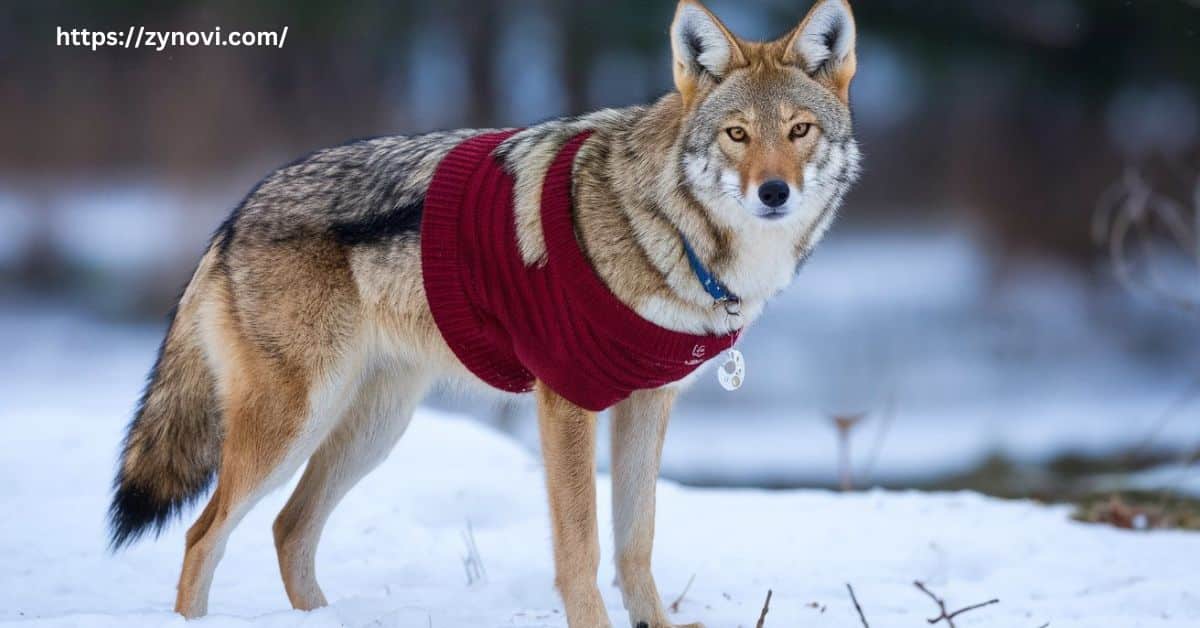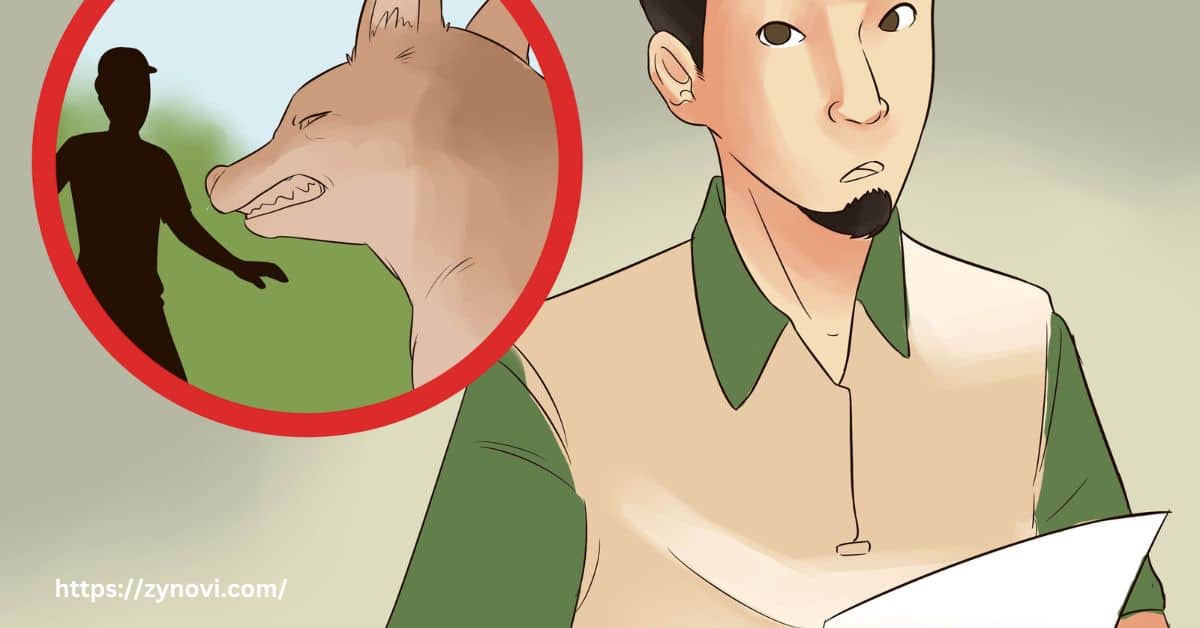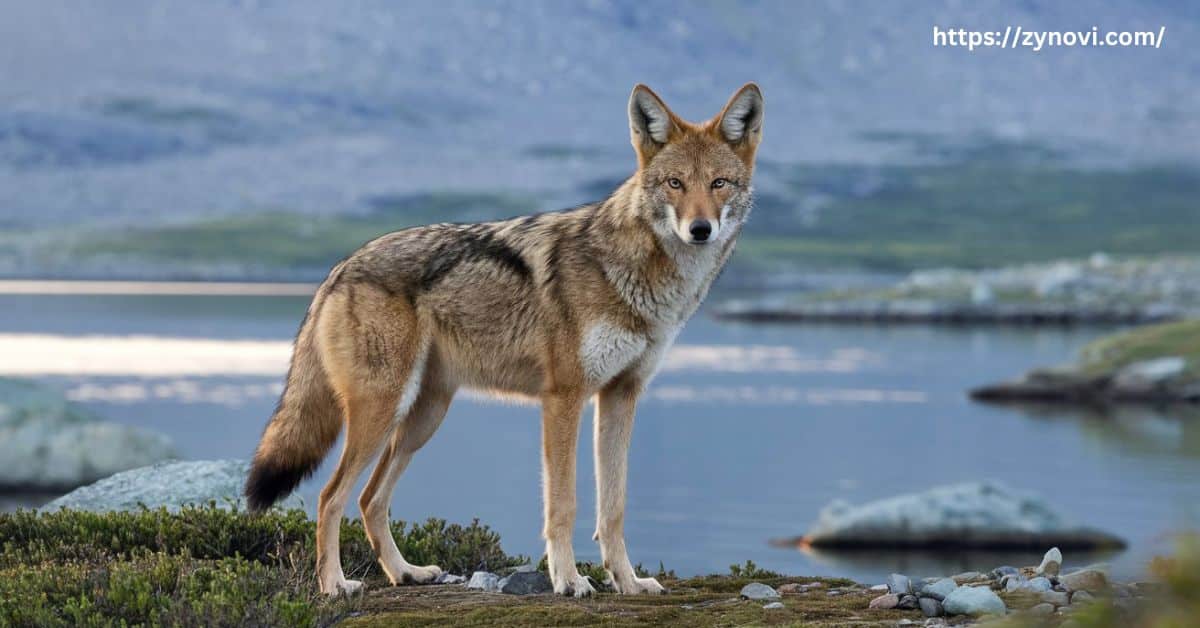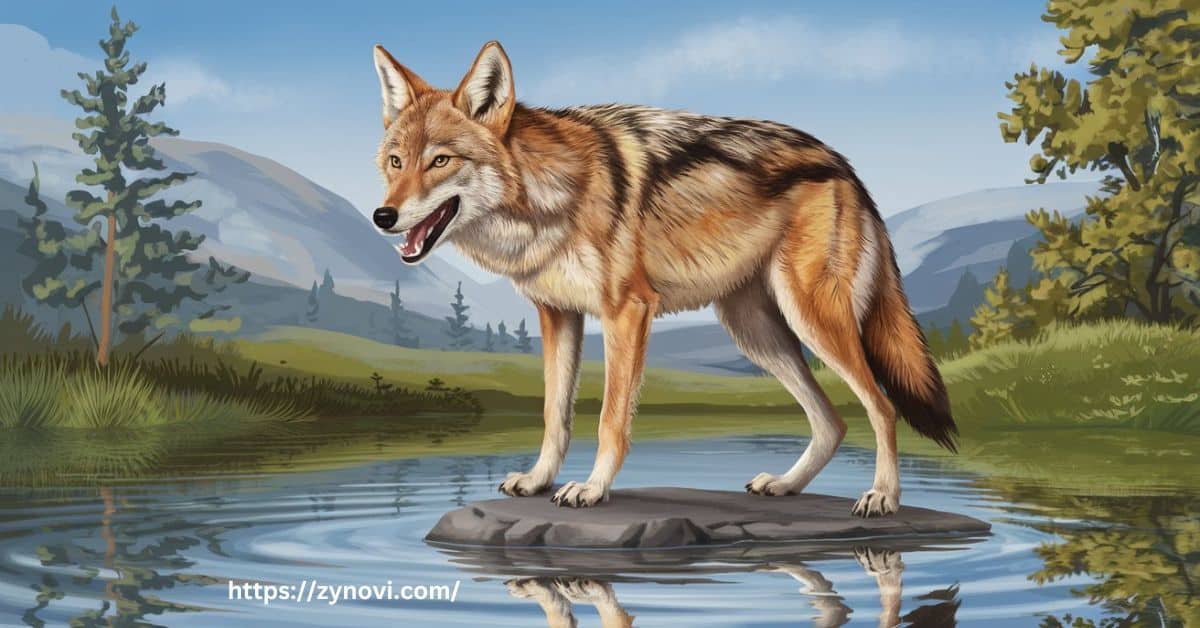Do Coyotes Attack Humans? While rare, coyote attacks can occur, typically triggered by habituation or territorial defense.
It’s a question many of us have when we hear about these wild animals lurking in our neighborhoods or forests. In this article, we’ll uncover the truth behind coyote attacks, what triggers them, and how you can protect yourself and your pets.
From rare incidents to practical safety tips, we’ll give you all the info you need to stay informed and prepared. Keep reading to learn how to coexist with these fascinating yet unpredictable animals!
Understanding the Coyote
The Evolution and Biology of Coyotes
Coyotes are medium-sized members of the canid family, known for their adaptability and wide distribution across North America. Here’s a quick overview of their physical and behavioral traits:
| Characteristic | Details |
|---|---|
| Weight | 20-50 pounds |
| Length | 3.5 to 4.5 feet (including tail) |
| Coat | Grayish-brown with variations |
| Distinct Features | Bushy tail, pointed ears, narrow muzzle |
| Diet | Opportunistic feeders (small mammals, insects, fruits, trash) |
| Activity | Primarily nocturnal but adaptable |
Coyotes evolved as highly efficient predators, originally inhabiting deserts and open plains. Today, their range includes urban areas, forests, and suburban neighborhoods, showcasing their ability to adapt to new challenges.
Coyotes in the Food Chain
Coyotes are integral to maintaining ecological balance, acting as both predators and scavengers in their habitats. By preying on small mammals like rodents and rabbits, they help regulate populations that could otherwise grow uncontrollably, reducing the risk of crop damage and disease spread.
Their opportunistic feeding behavior allows them to adapt to various environments, consuming fruits, insects, and carrion.
This diet not only sustains coyotes but also contributes to ecosystem health by aiding in seed dispersal and decomposition processes, showcasing their essential role in the natural food chain.
Do Coyotes Attack Humans?

Coyotes typically avoid humans, but under certain conditions, such as food attraction or territorial defense, they may pose a threat. Understanding their behavior is key to answering, “Do coyotes attack humans?”
Are Coyotes Dangerous to Humans?
Coyotes are typically wary of humans and prefer to avoid contact. However, certain situations can lead to conflicts:
- Food Sources: Garbage, pet food, or intentional feeding can lure coyotes into residential areas, increasing the likelihood of encounters.
- Habituation: Repeated exposure to humans or direct feeding can cause coyotes to lose their natural fear, making them bolder and more likely to approach.
- Territoriality: Coyotes may act aggressively during mating season or when defending their young or territory, perceiving humans or pets as threats.
Do Coyotes Attack on Humans: Myths vs. Reality
Coyote attacks on humans are exceedingly rare. According to studies, fewer than 30 confirmed attacks occur annually in North America. To put this into perspective, dog bites account for over 4.5 million incidents annually.
Notable incidents include:
- California, 1981: A three-year-old girl was attacked in her yard, highlighting the dangers of feeding coyotes and attracting them to residential areas.
- Nova Scotia, 2009: A 19-year-old woman tragically lost her life while hiking, emphasizing the importance of vigilance in wilderness settings.
These rare incidents are typically triggered by habituation, food attraction, or territorial aggression, rather than random acts of predation.
Real-Life Incidents and Key Statistics
Table: Coyote Attack Statistics
| Year | Location | Incident Details | Cause |
|---|---|---|---|
| 1981 | California | Child attacked in a backyard. | Feeding/habituation |
| 2009 | Nova Scotia, Canada | Fatal attack during a hike. | Lack of deterrence/hiking alone |
| 2022 | Arizona | Child bitten while parents were distracted. | Attracted by food |
Coyotes primarily target small pets rather than humans. Understanding their behavior can help minimize these rare occurrences.
How to Prevent Coyote Attacks

Would a coyote attack a human? To prevent coyote attacks, secure food sources and supervise pets outdoors. Taking these steps can help reduce the chances of an encounter.
Safety Measures for Humans and Pets
Ensuring safety in areas with active coyotes requires proactive measures:
- Avoid Feeding Coyotes: Never leave pet food or scraps outdoors, and secure trash bins with tight-fitting lids. Feeding coyotes, even unintentionally, diminishes their natural fear of humans and encourages them to return.
- Supervise Pets: Keep cats indoors to prevent them from becoming prey, and always leash dogs during walks, especially at dawn or dusk when coyotes are more active.
- Install Deterrents: Use motion-activated lights, sprinklers, or noise-making devices to scare off coyotes and discourage them from lingering near your property.
How to Respond During a Coyote Encounter
Do Coyotes Attack Humans? If you encounter a coyote, it’s important to act confidently and assertively to maintain their natural wariness:
- Make Noise: Clap your hands, yell loudly, or use a whistle to startle the coyote and signal that it should retreat. Avoid turning your back or running, as this might trigger its chase instinct.
- Appear Larger: Stand tall, wave your arms, or hold up objects like a jacket or stick to make yourself look bigger and more intimidating. This helps convey dominance.
- Use Bright Lights: Shine a flashlight or strobe light at the coyote to disorient and drive it away, particularly during nighttime encounters.
- Throw Small Objects: Toss sticks, rocks, or other non-lethal items toward the coyote—not to hit it but to scare it off and reinforce the idea that humans are a threat, not a food source.
Do Coyotes Attack Humans? In Urban Areas
Coyotes living in urban environments exhibit unique behaviors to thrive alongside humans:
- Smaller Home Ranges: Unlike their rural counterparts, urban coyotes often travel shorter distances as food sources like garbage, pet food, and small mammals are readily available nearby.
- Altered Activity Patterns: Urban coyotes may adjust their schedules, becoming more active during the day to avoid human interactions and nighttime predators.
- Diet: They rely heavily on accessible food sources such as rodents, unsecured trash, and pet food left outdoors, contributing to their adaptability in cities.
Cities like Los Angeles and Chicago have seen growing coyote populations, showcasing their remarkable ability to coexist with urban infrastructure. These populations underline the importance of proactive wildlife management and community awareness.
Coexisting with Coyotes
Coexisting with coyotes involves understanding their behavior and taking steps to prevent conflict. By respecting their space and following safety guidelines, humans and coyotes can live harmoniously.

The Balance Between Wildlife and Human Needs
Coyotes contribute significantly to ecological balance by:
- Controlling Rodent Populations: As natural predators, coyotes help manage populations of rodents and small mammals, reducing agricultural and urban pests.
- Cleaning Up Carrion in Urban Areas: Their scavenging habits assist in keeping environments clean by consuming dead animals, which prevents the spread of disease.
However, conflicts emerge when human actions, such as intentional feeding or leaving trash unsecured, cause coyotes to lose their natural fear of humans. Striking a balance between coexistence and safety is essential to maintaining healthy ecosystems and reducing risks to both humans and wildlife.
Community Education and Outreach
Educational programs play a crucial role in promoting safe coexistence between humans and coyotes by teaching:
- The Importance of Wildlife Corridors: These corridors help coyotes and other wildlife safely navigate urban areas without increasing human encounters, fostering peaceful coexistence.
- Responsible Practices: Community members can be taught to secure trash bins, avoid feeding wildlife, and take steps to prevent attracting coyotes into residential areas.
Successful initiatives, like the local ordinances in Boulder, Colorado, focus on coexistence and proactive management rather than lethal control, encouraging safer and more harmonious interactions between people and wildlife.
The Role of Wildlife Management
Wildlife management is essential for addressing coyote conflicts and ensuring safe coexistence between humans and wildlife. Key approaches include:
- Non-lethal Methods: Techniques like hazing, relocation, and habitat modification help reduce coyote interactions without causing harm, promoting long-term solutions.
- Lethal Methods: These are used sparingly and only in extreme cases where a coyote poses an immediate threat to human safety or public health.
- Urban Planning: Thoughtfully designed urban spaces, with wildlife corridors and safe barriers, help minimize human-coyote encounters, creating environments that both people and animals can thrive in.
Do Coyotes Attack Humans? Myths and Misconceptions
- Myth: Coyotes always carry rabies.
Fact: Rabies in coyotes is exceptionally rare, and when it does occur, it is typically confined to specific regions. Coyotes, like most wildlife, tend to avoid humans and pose little risk in terms of disease transmission. - Myth: Coyotes only live in rural areas.
Fact: Urban coyotes are increasingly common in cities, thriving due to the availability of food (like garbage and pet food) and shelter. Their adaptability allows them to live in suburban and urban environments just as successfully as in rural ones. - Myth: Coyotes are aggressive hunters.
Fact: Coyotes are opportunistic feeders, not aggressive hunters. They primarily target small, vulnerable prey such as rodents and rabbits, scavenging when opportunities arise. They are far more likely to avoid humans than actively hunt them.
FAQs
Can coyotes kill humans?
No, they are extremely rare, with only a few incidents reported annually.
What should I do if I see a coyote in my neighborhood?
Use hazing techniques to discourage their presence and report sightings to local authorities.
Can coyotes be dangerous to pets?
Yes, especially to small pets like cats and small dogs. Always supervise your pets outdoors.
What should I do if a coyote approaches me?
Stand tall, make noise, and slowly back away. Avoid running, as it may trigger a chase response.
Can coyotes be relocated?
Relocation is rare and often ineffective, as coyotes may return or face challenges in new habitats.
Conclusion: Do Coyotes Attack Humans?
Coyotes are fascinating and vital to North America’s ecosystems, playing an important role in controlling rodent populations and scavenging. However, their adaptability to urban environments necessitates a balanced approach to coexistence.
By understanding their behaviors, debunking common myths, and implementing preventive measures, we can reduce the risk of conflicts with coyotes.
Education and awareness are crucial in fostering a harmonious relationship between humans and wildlife, ensuring that both can thrive without unnecessary harm. With thoughtful practices, we can live alongside these resilient predators while respecting their role in the ecosystem.










